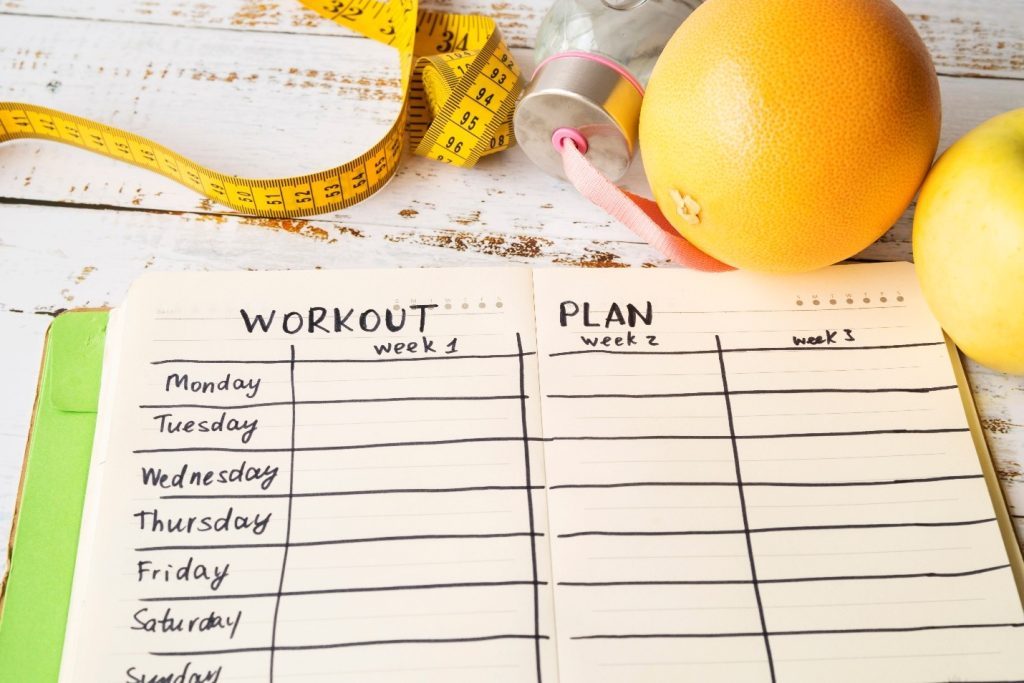To Achieve Your Ideal Body, Use a Weight Loss Goals Chart
A weight loss objectives chart is an essential tool for anyone embarking on a weight loss journey or attempting to improve their physical appearance. With this visual aid, you can set specific goals, track your progress, and stay motivated. To help you get the most out of a weight loss goals chart, and fulfill your targets, we will go over the relevance of this tool, as well as its primary aspects, specific features, and commonly asked questions in this thorough lesson.
Understanding the Importance of a Weight Loss Goals Chart
What Is a Weight Loss Goals Chart?
A weight loss objectives chart is a visual representation of your weight loss journey. Milestones your starting weight, your target weight, and your evolution over time are typically included. This chart serves as a roadmap, keeping track of your progress, and guiding you toward your desired weight loss goals.
Crucial Components of a Weight Loss Chart
1. Clearly stated goals:
A weight loss objectives chart should include your target weight as well as any intermediate targets you wish to meet. As you get closer to your final objective setting and meeting particular milestones helps, you stay motivated and on course.
2. Monitoring Measurable Advancement:
By using the chart’s designated section, to record your weight regularly, you may monitor your development over time. Measurable data can be used to assess plan adherence, and make necessary revisions.
3. Explanatory Display:
Using visual tools such as charts or graphs makes it easier to see your progress and identify patterns. When you see your accomplishments shown visually, you could feel more accomplished and inspired to keep working toward your goals.
4. Flexibility and Adjustability:
When attempting to reduce weight, you may encounter obstacles or unforeseen events along the way. A good goals chart should be flexible enough to let you modify your approach, without losing sight of your ultimate objectives.

Planned Weight Loss Chart
Establishing Goals:
1. Opening Mass
Please take note of your current weight as a starting point for your journey.
2. Target Bulk:
Decide on your ultimate goal weight while keeping reachability and practicality in mind. Consider factors such as your height, body type, and overall state of health.
3. Benchmarking Goals:
Break down your weight loss objective into smaller, more achievable targets. Aim for tiny steps ahead and track your progress along the way to stay motivated.
4. Regular Weigh-Ins:
Schedule regular weigh-ins to track your progress. Consistently put away a standard day and time to gauge yourself, ideally, gauge yourself before devouring any food or refreshments.
5. Graphical Representation:
To exhibit how you have changed over the long run. Utilize a diagram or outline, plot your starting weight, your objective weight and your achievement goals on the outline. Then at that point, update the graph much of the time with your ongoing weight data.
Consideration and Alteration:
6. Area of Reflection:
A part of your outline ought to be saved for your assessment of your turn of events, record any hardships you’ve confronted accomplishments you’ve had, and information you’ve acquired.
7. Modification Plan:
Prepare to adjust your goals and strategies as needed based on your experiences and advancement. Consider many approaches to overcome roadblocks or plateaus, and add them to your plan.
Responsibility:
10. Help Desk
Seek the support of friends, family, or a weight loss buddy to help you stay accountable, and motivated during your weight loss journey. Keep them informed about your goals and progress on a regular basis to stay motivated and accountable.
11. Public Commitment:
Consider publicly sharing your weight loss goals and progress on social media or in a community forum. Making your goals public can increase accountability and garner support from others who are on a similar journey.
Conclusion
You may overcome barriers and maintain motivation to attain your target weight by creating measurable, achievable goals, documenting your progress, and being flexible as you go. Creating a chart with your weight reduction targets is a great tool, to help you approach your ideal body weight. It is possible to achieve your weight reduction objectives . If you are committed, and persistent patience and perseverance are essential.
FAQs About Weight Loss Goals Charts
1. How often should I update my chart of goals for losing weight?
It is recommended that you update your weight loss targets chart on a weekly or twice-weekly basis. This makes it possible for you to effectively track your development, and adjust your strategy as needed.
2. What occurs if I don’t meet my milestone achievement deadline?
When attempting to reduce weight, delays or setbacks are frequent. If you don’t reach your milestone goals on schedule, Take this opportunity to assess your performance, identify any obstacles, and adjust your plan of action accordingly.
3. Can I use a digital weight loss goals chart instead of a physical one?
Digital goal charts for weight loss are a useful replacement for traditional paper charts, with a range of applications and online resources at your disposal. You can monitor your progress digitally, and even sync data across many devices for easy access.
4. How can I stay motivated when it seems like growth is taking a while?
A sluggish phase of your weight loss journey may make it hard to stay motivated, but it can help to focus on your small victories and keep in mind why you started down this route in the first place. Congratulate yourself on every small victory to keep yourself motivated, and accountable. You can also look for help from friends, family, and online communities.
5. What do I do once I reach my target weight?
Once you’ve achieved your target weight, celebrate and give yourself credit for your hard work, dedication, and success. If you want to keep losing weight, you must transition to a maintenance phase. Create wholesome habits that support preserving a healthy weight, such as balanced diets, frequent exercise, and mindful eating.












Leave a Reply